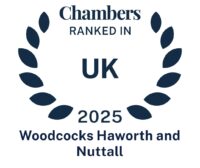The Right to Manage (RTM) is a statutory procedure introduced by the Commonhold and Leasehold Reform Act 2002 that enables residential long leaseholders to take over responsibility for management of their building.
Property law expert Eleanor Longworth, based in WHN’s Bury office, explores what the right to manage is, how to obtain it and what reforms are expected to support residential property tenants in the future.
What is the right to manage?
RTM provides long leaseholders, which generally means those with leases granted for a term of 21 years of more, the opportunity to control how their property is managed. It is often an attractive prospect for tenants in long-term lease agreements.
Leaseholders don’t need to prove any mismanagement by the landlord or even get the landlord’s permission.
Long leaseholders of residential flats have the right to compel the transfer of management responsibilities from landlords and management companies to their own, specially created, company.
It may be that you as a leaseholder are dissatisfied with the way that your building is being managed. Repairs may take longer than expected, the development may be falling into a state of disrepair, your landlord may never be available, or you may feel you are being overcharged.
You may, however, be perfectly satisfied with the services that are being provided but simply want to take responsibility for your block of flats. In any of these cases, you may wish to explore the possibility of acquiring the right to manage.
Who can apply for the right to manage?
To be able to qualify to apply for the RTM, the building that you live in must adhere to the following:
- It must be self-contained or part self-contained and include at least two flats.
- At least two thirds of the flats must be let to tenants with long leases.
- While the building can be part commercial, the non-residential proportion must not be any more than 50 per cent of the total floor area.
- It must not fall within the residential landlord exemption which applies to blocks of four or fewer flats where the landlord resides in one of them.
To acquire the right to manage, leaseholders of at least half of the flats within the building must be members of the RTM company, so it is important that you canvass opinion at the outset to ensure that enough of the tenants are on board.
What is an RTM company?
To exercise the right to manage, leaseholders must set up an RTM company and follow certain procedures. The RTM company can manage the building directly or retain a managing agent to do it.
The landlord has the right to be a member of the RTM company and to vote on decisions. How many votes will depend on how many flats the landlord owns in the building.
There are certain statutory requirements to be satisfied. The directors of the RTM company will be subject to statutory duties and responsible for compliance. It is, therefore, important that the effects of applying for the right to manage are properly understood.
What are the procedures behind forming an RTM company?
Here is a brief breakdown to the procedures:
- Preparation and Information Gathering: it is vital to ensure that the building qualifies and that there are sufficient qualifying members. Leaseholder support should be canvassed. The RTM Company is incorporated. If you do not have the information required to exercise the claim, notice can be served on the landlord. The landlord has 28 days to respond.
- Notice Inviting Participation: These must be sent to all qualifying tenants inviting them to become members of the Right to Manage (RTM) company.
- The Claim Notice: The claim notice informs the landlord and any other party with responsibility for management of the intention to acquire the RTM.
- Right of Access Notice: Once the claim notice has been served the landlord or RTM company can service this notice requiring access to inspect the premises. If notice is received the recipient must respond within 10 days.
- Counter-notice: Landlords have the right to serve a counter notice either admitting that the RTM company is entitled to acquire the right or disputing entitlement.
- Serve contractor and contracts notices: Landlords are under a statutory obligation to inform contractors and also provide information to the RTM about contracts. The RTM company will need to decide whether it wants to retain the services of the various contractors or whether it would like to retain others. These notices should be served on the determination date or as soon as reasonably practicable after that date.
- Duty to Provide Information Notice: Service of this notice means that the landlord should provide specific information such as accounts. The landlord must respond within 28 days of notice being served however, the landlord does not have to act before the acquisition date.
- Acquire the RTM: The date of acquisition will be the date specified within the Notice of Claim, if the landlord agrees to the claim or fails to respond.
- On acquisition: The management functions transfer to the RTM company.
- Costs: The landlord is not entitled to recover costs incurred in connection with exercise of the RTM claim, however, there are certain exceptions, such as if the claim is withdrawn.
Right to Manage reform
The Law Commission published the Leasehold home ownership: exercising the right to manage report on July 21, 2020. It included the following recommendations:
- Reduce the costs of making an RTM claim and give leaseholders more control over those costs.
- Make the RTM available to more leaseholders in a wider variety of buildings.
- Make the process of claiming the RTM less complicated and less likely to be frustrated because of small procedural errors.
Reform is therefore hopefully in the pipeline – however we do not know for certain when it will be implemented.
In a parliamentary debate on February 20, 2023, Michael Gove, Secretary of State at the Department for Levelling Up, Housing and Communities said the government hoped to introduce legislation to fundamentally reform the RTM system in the King’s Speech, which has now been delayed until autumn.
The indications are that legislation will be enacted towards the end of the year however, it is not guaranteed, and it is not certain that it will apply to RTM. If leaseholders have any issues regarding their freeholder or management company, it is suggested that they act sooner rather than later. We can guide them through the process.
Eleanor Longworth specialises in residential long leasehold dispute resolution matters acting on behalf of landlords, management companies and tenants.
For more information on applying for the right to manage or any other long leasehold dispute matter please contact Eleanor on 0161 761 8082 or by email: eleanor.longworth@whnsolicitors.co.uk













